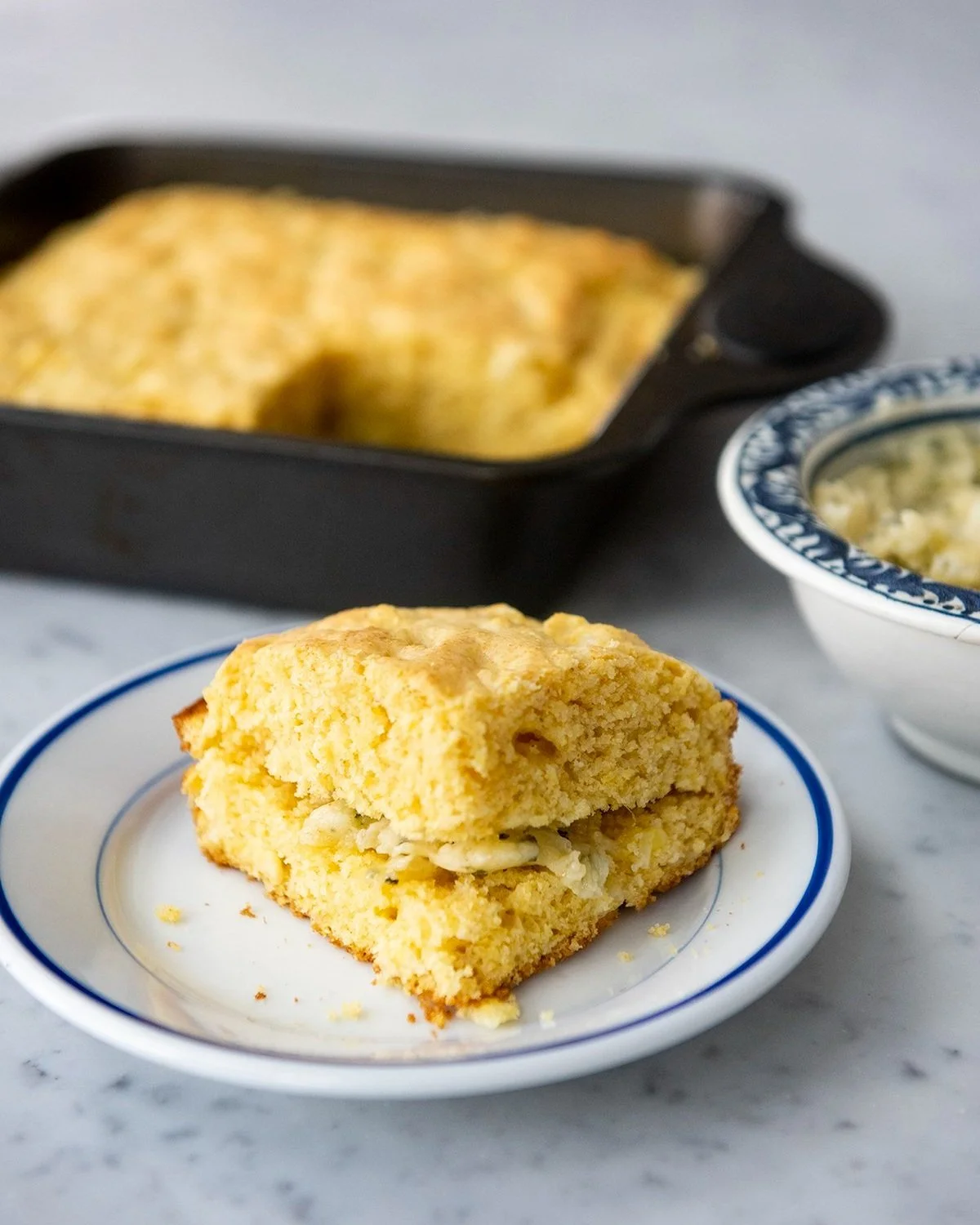Whole Wheat Bread

Whole-wheat bread is a family staple: I have relied on this recipe for over 50 years. The cliché for properly kneaded bread, smooth as a baby’s bottom, always makes me smile.
Whole-Wheat Bread
Makes 2 large loaves, or 2 medium loaves and 6 cinnamon rolls (page 30 in my cookbook)
1 tablespoon dry active yeast
1 teaspoon sugar
½ cup lukewarm water
1½ cups whole or 2% milk
4 tablespoons butter
½ cup old-fashioned oats
¼ cup brown sugar
3 tablespoons molasses
1 tablespoon honey
1 tablespoon salt
12 ice cubes
1½ cups tepid water
3 cups unbleached white bread flour, divided
5 to 6 cups whole-wheat flour, divided
Directions
In a 2-cup measuring cup, mix yeast with sugar. Slowly stir in the water, mixing to dissolve the yeast. Set aside to proof. It will bubble and double in size within 10 minutes. If it doesn’t, your yeast is defective and you will need to begin anew.
Heat milk, butter, and oats in a saucepan over medium heat until milk comes to a boil. Lower heat and simmer 1 minute. Remove from heat.
While the milk heats, measure brown sugar, molasses, honey, and salt into the bowl of a mixer. Add the oat-milk mixture and stir. Add the ice cubes and stir to melt and cool the mixture. Use your finger to gauge the temperature. When it cools to tepid, remove any unmelted ice cubes with a slotted spoon. Add the additional 1½ cups water.
Add 2 cups of white flour to the bowl. Attach the bowl and the paddle attachment to the mixer. Blend the ingredients on the lowest speed. Stir the yeast mixture before adding it to the bowl along with the last cup of white flour. Increase speed to medium and beat dough for 3 minutes. Turn off mixer while you add 3 cups of whole-wheat flour, then blend on low before increasing speed to medium. Beat 4 minutes.
Switch from the paddle attachment to the bread hook. Add another 2 cups of whole-wheat flour and incorporate on low speed. Now, you must be the judge. Flours, weather, all sorts of things dictate how much additional flour is required. The dough may not require any additional flour or may need up to 1½ cups. You want the dough to pull away from the sides of the bowl and form a mass, yet still be tacky and not dry. Knead with the bread hook for 4 minutes. The dough changes as it is kneaded and may need more flour gradually added.
Grease a bowl large enough to hold the dough as it doubles in size. Flour a workspace, keeping a small mound of additional flour at the ready. Dump the dough on the floured surface, flour your hands, and begin kneading the dough, constantly pushing it away from you with the palm of one hand while flipping it over and returning it toward you with the other, creating a heart-shaped ball. Use only enough flour to keep it from sticking—better too little flour than too much. (If you use too much flour, wet your hands and dribble on spoonfuls of warm water while you knead. The dough will take a few times of kneading before it absorbs the additional water and recovers.) You will feel the dough becoming pliant and smooth. Knead it with gusto for 4 minutes or so, until it is supple and feels alive. When finished, roll the top of the dough in flour to lightly dust it.
Place the dough in the greased bowl with the floured side facing up. Loosely cover the bowl with plastic wrap and top with a kitchen towel. Set the bowl in a draft-free, warm spot to rise. It will take 1½ hours to 2 hours for the dough to double in size.
Grease 2 metal 9 x 5-inch bread pans. When the dough has doubled in size, flip it back onto the floured workspace and punch it down with your fingers to remove all the air bubbles. Divide the dough in half. Using your fingers, flatten one of the halves into a large rectangle. Fold the ends in and roll and shape the dough into a loaf that fits nicely in the bread pan. Before you put the loaf in the pan, dust the top with flour. Repeat with the other loaf. Set the loaves far enough apart that the dough will not touch and stick together when it rises above the pan. Lightly cover with plastic and a kitchen towel. Allow the loaves rise for an hour.
Thirty minutes before the loaves finish rising, preheat oven to 375° and place the rack in the center of the oven. When risen, carefully remove the plastic and towel. Set the loaves in the oven and bake for 10 minutes. Then lower the temperature to 350° and bake an additional 20 to 25 minutes. Check if the bread is done by turning a loaf out of the pan and tapping the bottom of it. You want to hear a hollow thud with a slight ring. Remove loaves from pans, place on a cooling rack, and cover with a kitchen towel. You can brush them with butter when you first take them from the oven, but it isn’t necessary.
Sally Uhlmann’s passion for cooking led her to publish a memoir-style cookbook, “Just Cook with Sally.” She splits her time between the States and her farmhouse in Cortona, Italy, when she is not traveling the world. Sally cooks, develops recipes, and writes stories—mostly about the intersection of food, travel, and her life.






